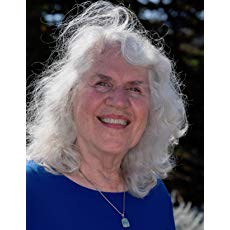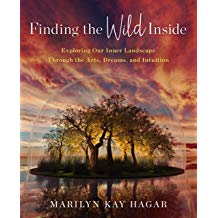Writing and the Arts as Therapy
 I remember the day in eighth grade when our teacher, Mr. Johnson, stood in front of the class and called us to attention. “This is the best piece of student writing I have come across in my twenty-two years of teaching,” he told us.
I remember the day in eighth grade when our teacher, Mr. Johnson, stood in front of the class and called us to attention. “This is the best piece of student writing I have come across in my twenty-two years of teaching,” he told us.
Our homework that night was to write an essay. What he was about to read was supposed to inspire us. I don’t remember the topic of that essay, but I do remember that we were moved by it. The room became quiet and the air around us electrified. When he finished, we sat in stunned silence.
He looked up and asked, “Do you know who wrote that?”
Silence again.
“Roy Hagar, Roy Hagar wrote that.”
My heart sank. Roy was my older brother. He was brilliant and a gifted writer. It was a blessing and a curse following him through school. I was in tears that night as I tried to write my essay. I felt I couldn’t measure up and I desperately needed to. That was the day I decided that I could not write.
It was a long time before I was able to find the writer in me once again. In a culture that teaches the arts as competition, many of us leave childhood convinced that we are not writers, artists, musicians, or dancers. We reserve those titles for the gifted few, looking to them to do our art for us, forgetting that the urge to express ourselves creatively is in all of us. It comes with being human.
Many years later, I was a stay at home mom with three little boys. Life on the outside was full to overflowing – but on the inside, I was depleted. A piano came into my life, and like
turning on a faucet, music began to pour out of me. That made a crack in the dam I had built around my creative energy, and as the dam burst, I found myself making art and writing too. That opening led me to my life’s work as an expressive arts therapist.
That is when I learned that the arts tell me something important about who I am and in the big picture, help me deepen into what it means to be human. All I had to do was surrender to what wanted to emerge, letting go of product and listening for what my creative expression had to say to me. Now, the arts were less about doing and more about receiving. I didn’t have to make something beautiful or pleasing to others. What I created had its own life, its own reason for being and I could learn from it. I’ve dedicated my life and work to that kind of exploration.
In recent years my own creative energy has become focused on writing. My life as a writer is not so different from my life as an expressive arts therapist. At the core, in both, we open to our imaginations, that crazy wild part of ourselves that can dream up something that just moments before didn’t exist. Whether we write fiction or nonfiction, writing we can trust always comes from sinking down into that place I call our “wild inside,” because that is where we find our deepest truth about life.
Writers offer those truths to others, and may or may not be interested in taking them to heart for themselves, but my clients at my creative retreat always come to me asking to use the arts to look into their personal lives. Playing in the arts, we open doors to their “wild inside,” in hopes that they can find a new vision for their lives.
For me, staring at a blank page when I begin writing, pinning a blank sheet of paper on my easel to begin painting, and sitting in silence at my piano before I start to play, feel exactly the same. Just by the simple act of beginning, making a mark in the emptiness, there is a commitment to some kind of inquiry. That is an important part of both writing and expressive arts therapy. Imagine how we and our world could change, both personally and culturally, if we started each day with that kind of creative inquiry.
One big difference between my writing life and expressive arts therapy is that as a writer, I am interested in honing my skills, improving my technique, learning to edit, shaping my product so it’s accessible to my readers. Many imagine that expressive arts therapy is for people skilled in the arts. The truth is, I have to ask those clients to leave their technique at the door. In sessions, we want to let the voice closest to our wild creative center speak, unedited. That voice is often messy, and not so well crafted. Trying to control it or edit it for others may lead us astray.
Writing is an important part of expressive arts therapy as it is the bridge between our non-verbal world and our more rational selves. For me, when I try to express the ineffable inside me, I turn first to sound, music, and movement, ways of expressing that are closest to my physicality. They are fluid. They are of the moment, and then they disappear. If I have a clearer notion of what is not yet speech ripe inside of me, I turn to art, bringing it out in color, shape and form. Lastly, I turn to words, sometimes writing with my non-dominant hand. Poetry stays close to that creative center, as does timed free writes, stories, fairy tales, anything that will help us discover more than what we already know about ourselves and our world. At the end of sessions, I often encourage journal writing.
It is a practice, walking that bridge between the verbal and non-verbal parts of ourselves. But as we practice, we integrate those two important aspects of ourselves and find our way to a fuller expression of what it means to be fully human.
Marilyn Kay Hagar, author of “Finding the Wild Inside: Exploring Our Inner Landscape Through the Arts, Dreams and Intuition”
—
MARILYN HAGAR: Marilyn Hagar, MA, REAT, is a registered expressive arts therapist who owns and operates For the Joy of It!, a creative retreat in Mendocino, California. She has led groups and workshops at her forest retreat for more than forty years, dedicating her life to the belief that we are all creative and that expressing ourselves through the arts puts us in touch with our own wild essence.
Marilyn has published several articles about her creative life and her adventures in the great outdoors. She has also exhibited her artwork and her art quilts, inspired by inner-life imagery and her dream world. Her book “Finding the Wild Inside: Exploring Our Inner Landscape Through the Arts, Dreams and Intuition” will be available for purchase on October 22, 2019. For more information about Marilyn’s life and work, visit www.marilynhagar.com.
 Today’s world urges us to look outward for life’s meaning and purpose—but our inner lives are the true source of the deeper knowing that gives life meaning. In Finding the Wild Inside, Marilyn Hagar encourages readers to discover that creative place inside us that knows there is more to life than we are currently living—the less rational part of ourselves that she calls our “wild inside,” a place most of us have not been taught to navigate.
Today’s world urges us to look outward for life’s meaning and purpose—but our inner lives are the true source of the deeper knowing that gives life meaning. In Finding the Wild Inside, Marilyn Hagar encourages readers to discover that creative place inside us that knows there is more to life than we are currently living—the less rational part of ourselves that she calls our “wild inside,” a place most of us have not been taught to navigate.
Using stories from her own life—from infancy through caring for her elderly parents as an adult—Hagar shows us how, through playing in the arts, contemplating our nightly dreams, fostering our intuition, and reconnecting to Mother Nature, we can discover our own authentic wild self. Opening to this part of ourselves, she teaches, isn’t so much a search as it is a listening, a curiosity, a playfulness, and a learning how to think symbolically, all of which can be cultivated. Most of all, it takes a willingness to lay down our egos and open ourselves to the awe and wonder of the wild universe of which we are a part. Instructive and inspiring, Finding the Wild Inside is a blueprint to living life from the inside out—and, in doing so, walking a path of authenticity and belonging.
Category: Contemporary Women Writers, How To and Tips

























